The Affordable Care Act (ACA) is the name for the 2010 health care reform law which addressed health insurance coverage, costs, and preventative care. On March 24th 2017, House Republican leaders pulled legislation to repeal the Affordable Care Act. While a rewrite to the law appears to be on hold, the debate continues. In light of these recent developments, I wanted to dig into the ACA’s impact on US health care thus far.
In part 1 of this analysis, I explore data compiled by the US Department of Health and Human Services and US Census Bureau. This dataset includes uninsured rates before and after the ACA, estimates of individuals covered by employer and marketplace healthcare plans, and enrollment in Medicare and Medicaid programs.
The following questions were addressed:
- How has the Affordable Care Act changed the rate of citizens with health insurance coverage?
- Which states observed the greatest increase in their insured rate?
- Did those states expand Medicaid program coverage and/or implement a health insurance marketplace?
The Python code and data used for this post can be found here.
The Affordable Care Act increased the rate of citizens with health insurance coverage by an average of 5.43% across all states. The states with the greatest increase in their insured rate were Nevada, Oregon, California, Kentucky, New Mexico, and West Virginia. As of 2015, there were an estimated 19.8 million individuals with healthcare coverage who were previously uninsured prior to the implementation of the ACA.
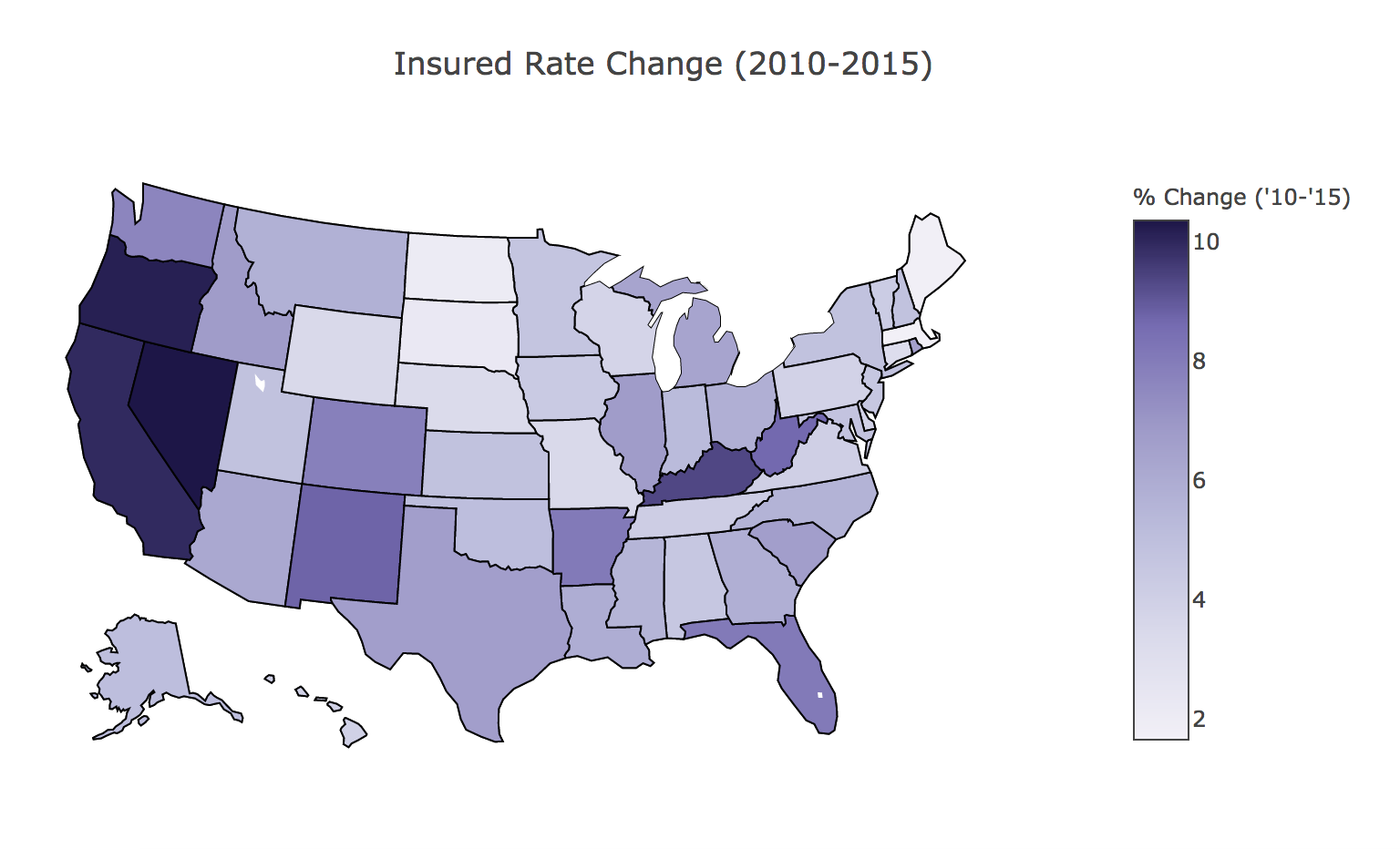
A central goal of the ACA was to reduce the number of uninsured by increasing access to affordable coverage options through Medicaid expansion and the Health Insurance Marketplace. States with the greatest increase in their insured rate also expanded Medicaid programs. Roughly 25% of states with Medicaid expansion had higher insured rate increases than all states without Medicaid expansion.
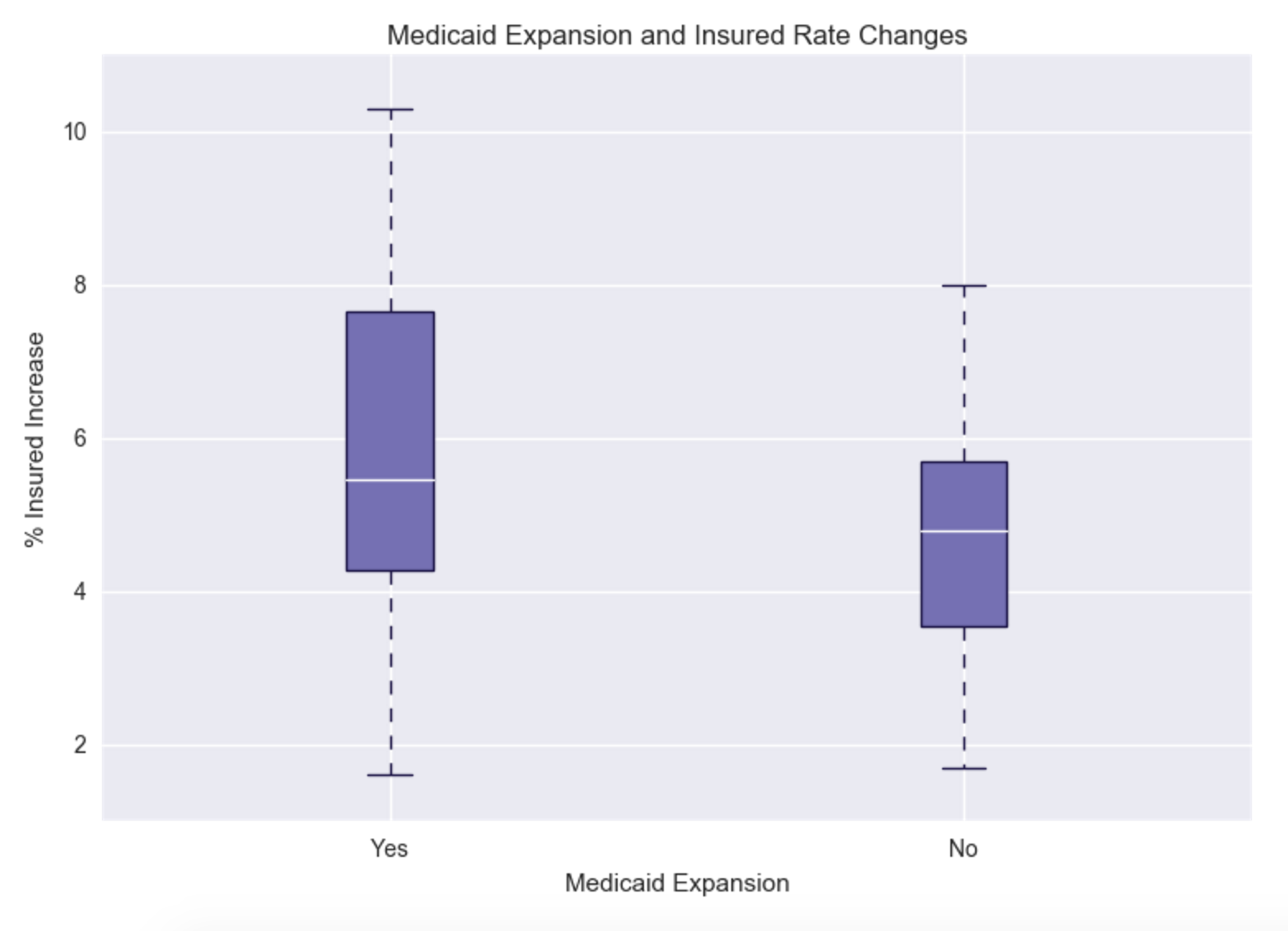
Medicaid Enrollment Change Per 100,000 People (2013-2016)
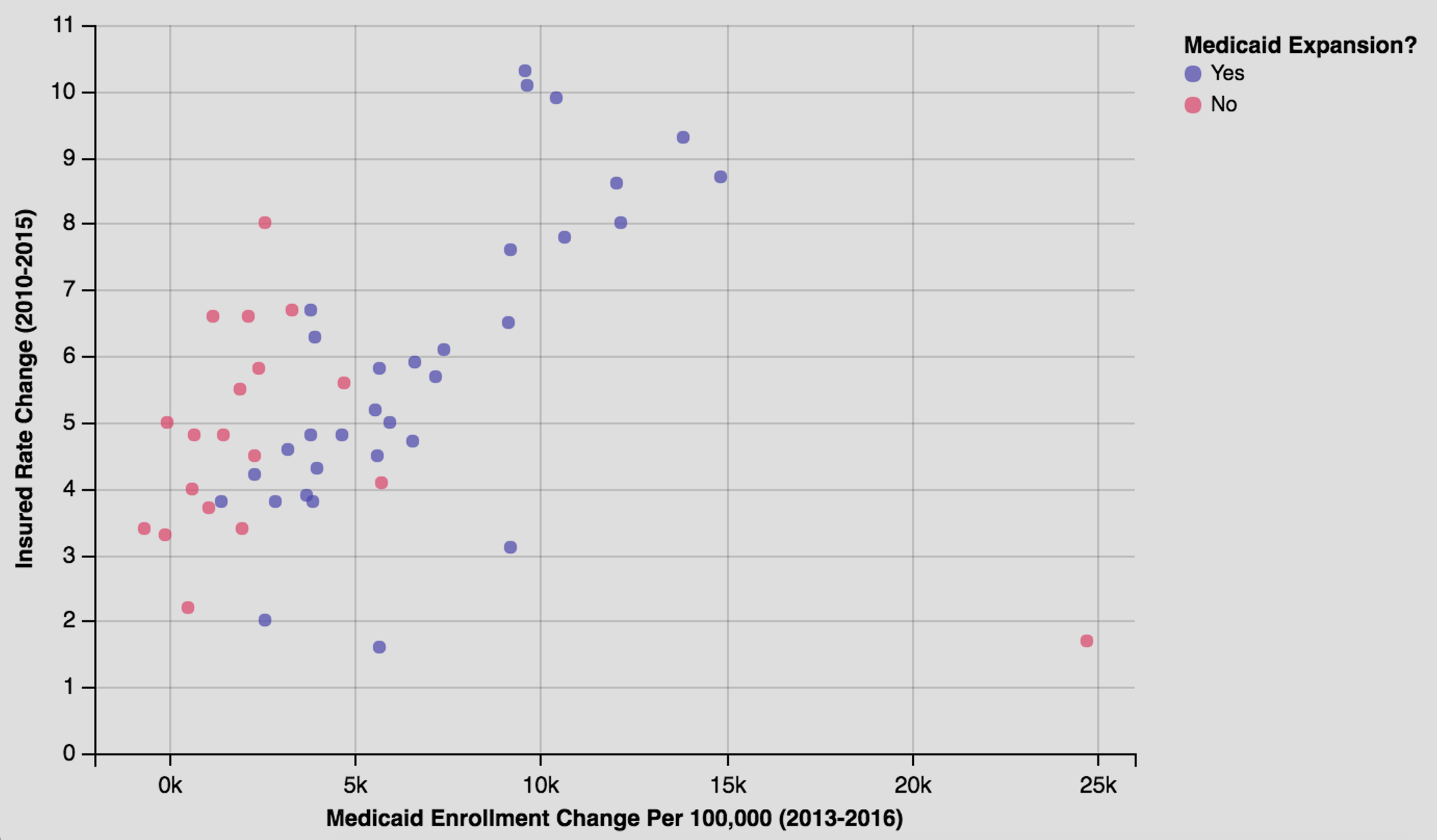
Refundable tax credits were designed to help eligible individuals and families with low or moderate income afford health insurance purchased through the Health Insurance Marketplace, beginning in 2014. States that did not expand Medicaid instead show greater numbers of individuals covered through the Health Insurance Marketplace per capita and higher tax credits per capita.
Marketplace Tax Credits Per 100,000 People (2016)
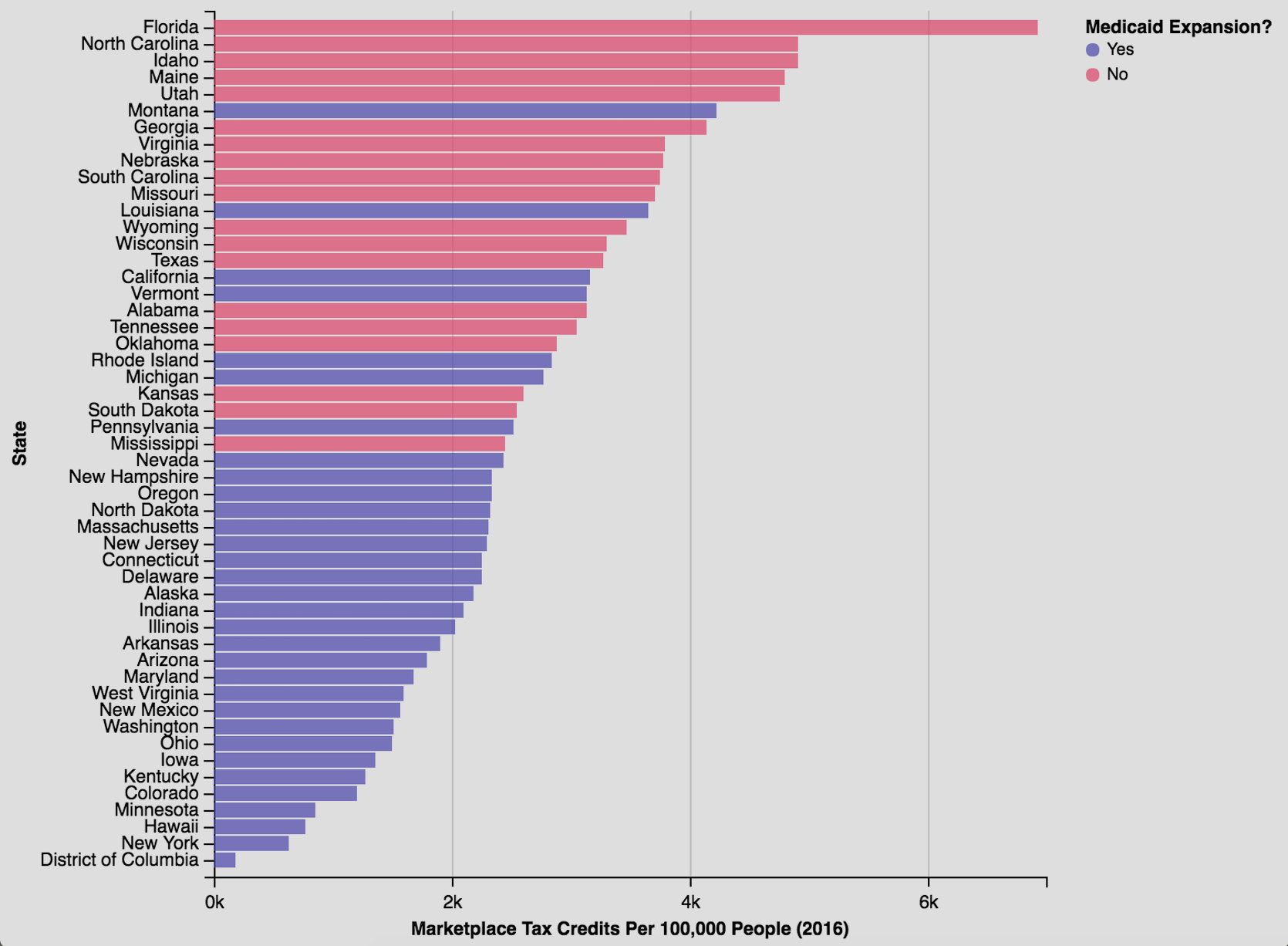
Number of Individuals Covered by the Insurance Marketplace Per 100,000 People (2016)
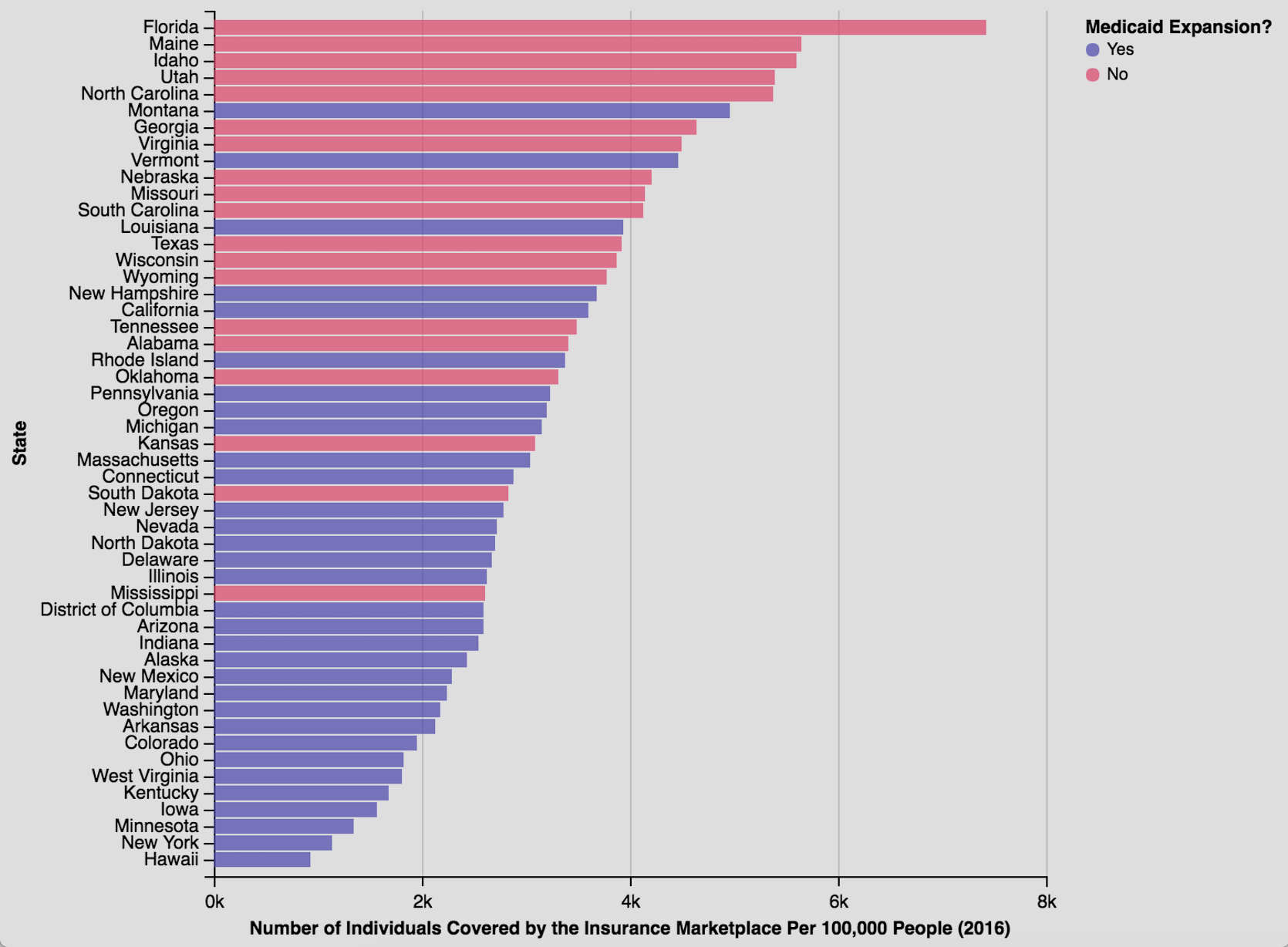
On June 28, 2012, the U.S. Supreme Court issued its decision making Medicaid expansion optional for states. There is no deadline for states to implement the Medicaid expansion.
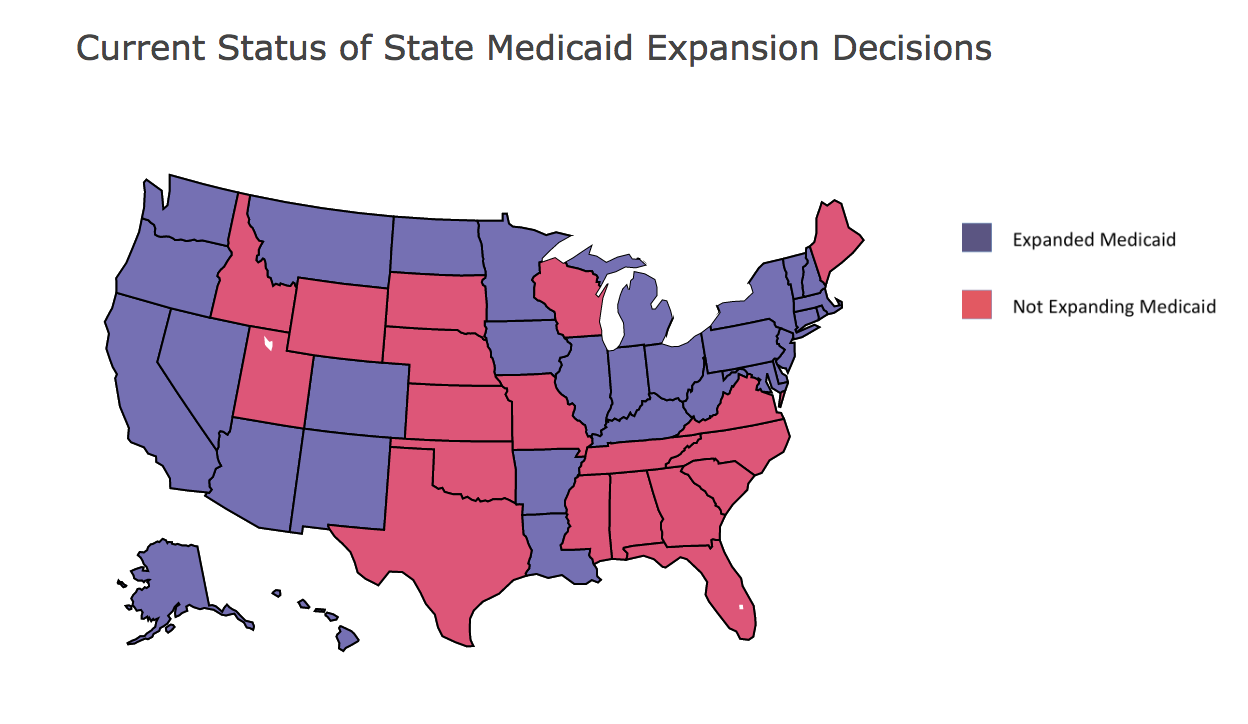
Future decisions by those 19 states without Medicaid expansion programs and continued funding of premium tax credits will contribute to the continued reduction of their uninsured rates.
In part 2 of this analysis, I will look at a dataset originally prepared and released by the Centers for Medicare & Medicaid Services (CMS). This dataset includes extensive information on health and dental plans offered to individuals and small businesses through the Health Insurance Marketplace. I will look to shed some light into how the ACA has affected healthcare costs.
Update:
May 4th, 2017: This post has been updated with the House passage of the American Health Care Act.